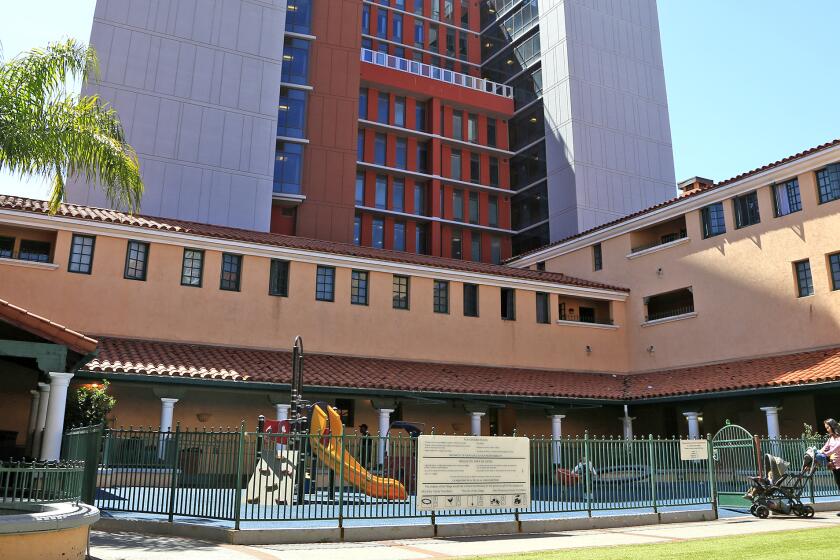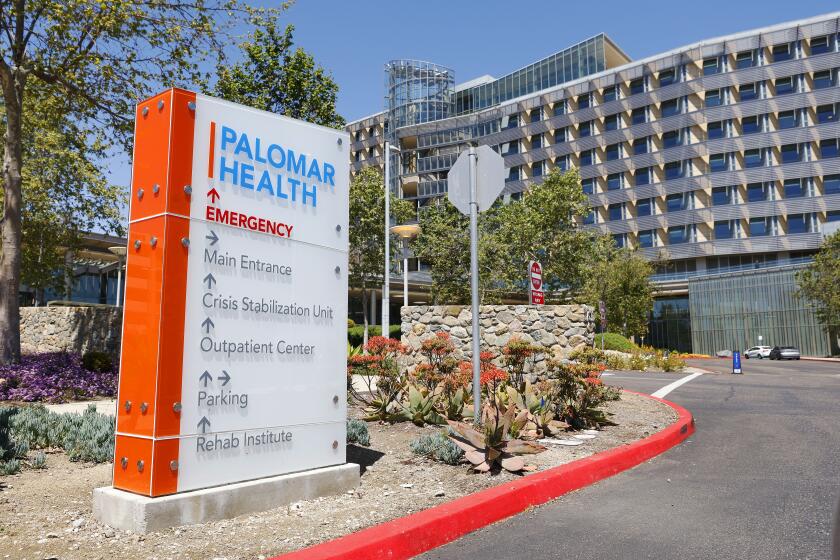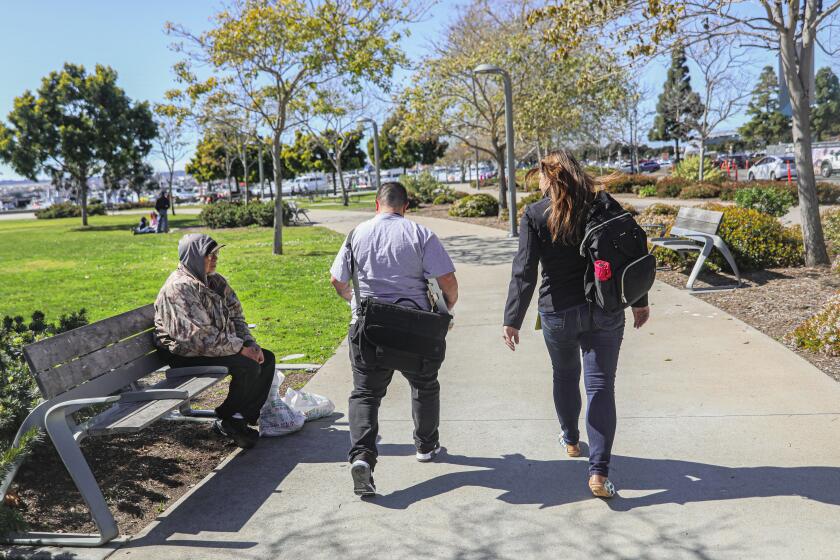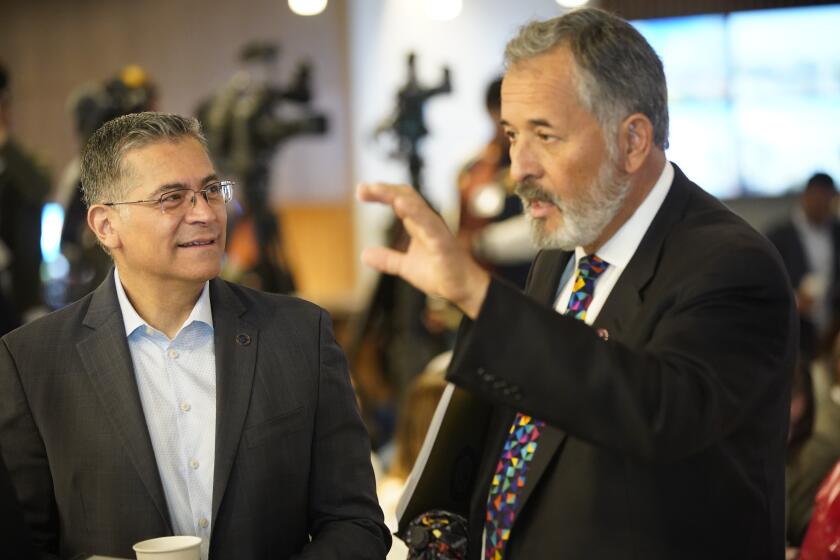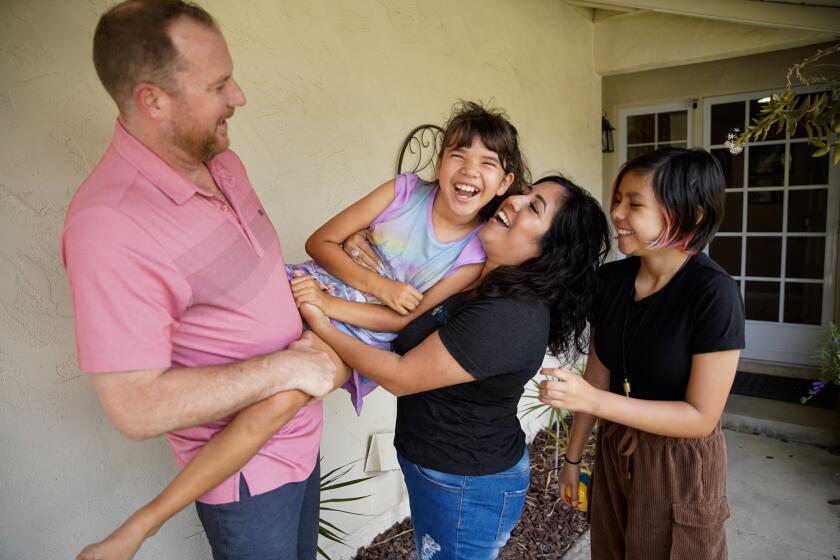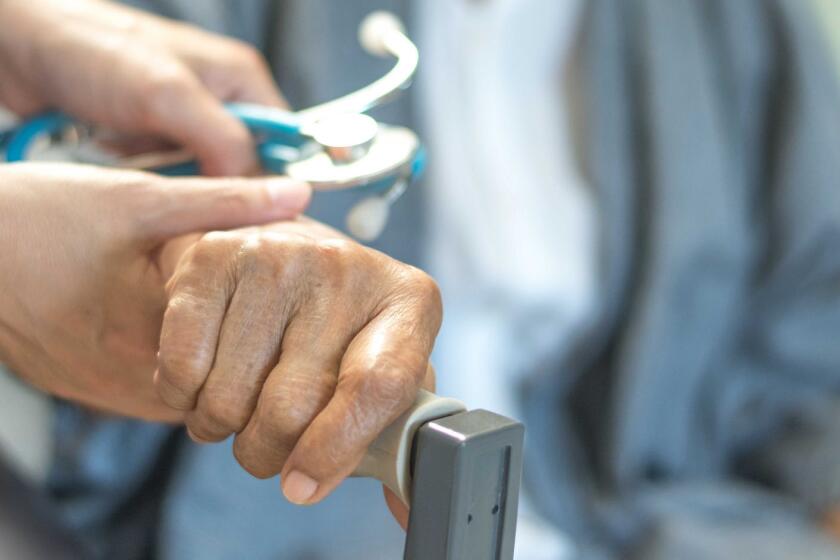Hospital admissions rising across San Diego as COVID-19 spreads among unvaccinated
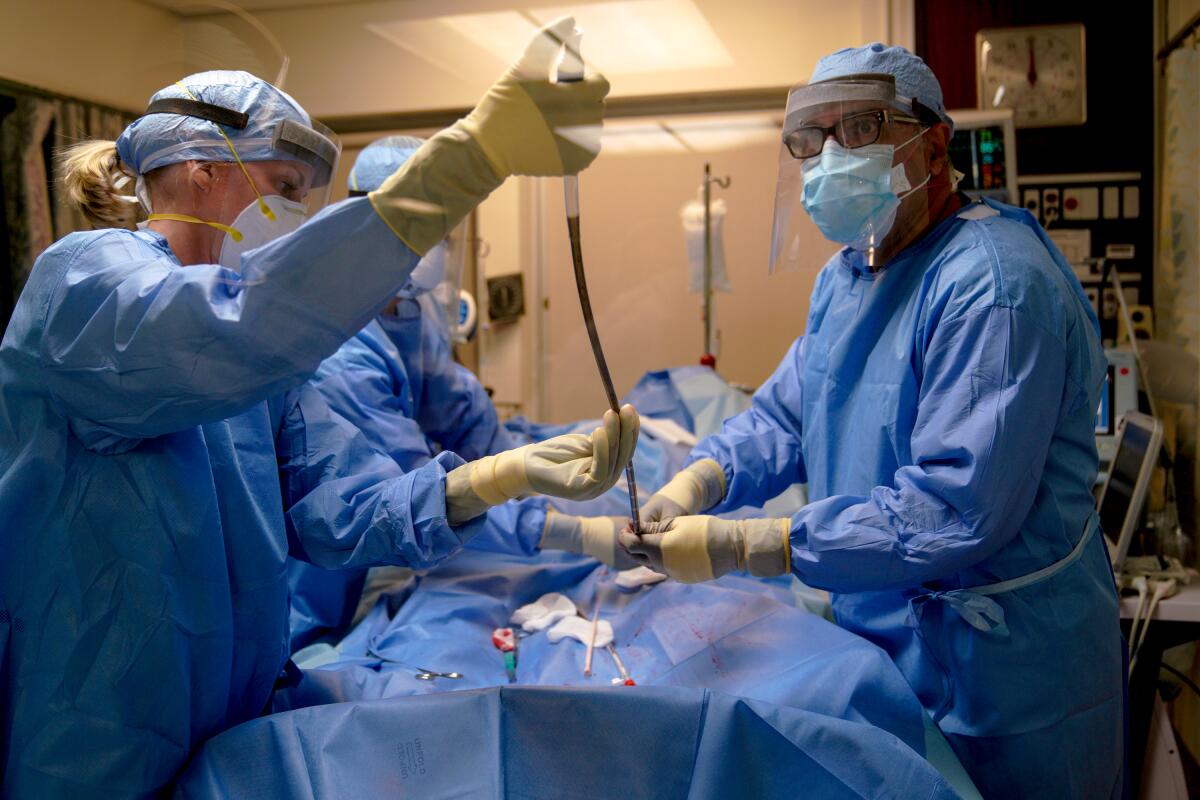
Scripps executive calls upward trend worrisome, especially amid staffing challenges. ‘People are tired.’
As the number of coronavirus-related hospitalizations continues to drift upward in San Diego and across the nation, cracks are beginning to show among the women and men tasked with taking care of those whose infections become life threatening.
According to the latest weekly tracking report from the county health department, total COVID-19 related hospitalizations reached 407 Tuesday, one week after the number hit 316. Most of the patients have not been vaccinated.
While the number is still far from the peak of more than 1,800 seen in January, experts say the current upward trend, which is also increasingly resulting in heavier volumes in emergency departments, is starting to challenge organizations’ abilities to bring in enough staff.
Dr. Ghazala Sharieff, chief medical officer for Scripps Health, said Wednesday that there are several reasons why COVID-19 is causing a people problem.
“For staffing, it’s a little bit of everything,” Sharieff said. “People are tired, people planned on well-deserved summer vacations, people are calling in sick.”
Generally, medical providers can lean on specialized staffing companies to take up the slack, but that fallback has been less available as well.
“The agencies we’ve been talking to have said that they’ve had staff decide they don’t want to work anymore because they just got through dealing with COVID, and they’re burnt out,” Sharieff said. “Even if you go to an agency, it’s hard to get people to come to work.”
Many, added Cassia Yi, a program coordinator and nurse specialist at UC San Diego Health, are choosing to retire rather than fight through another surge. Or, they are simply avoiding work on some units.
“Now when we interview travel nurses, one of the first questions they ask is, ‘is this a COVID unit?’” Yi said. “And if we say, ‘yes,’ they’re like, ‘I’m not interested.’”
And the number of new infections arriving daily is showing no signs of letting up.
Tuesday’s new-case total was 908, following Monday’s tally of 1,204, the highest daily number reported since July 22. The daily number of new cases has now been over 700 every day but one in the past two weeks.
There was a little good news in Wednesday’s update. The number of San Diego County residents who are fully vaccinated finally topped 2 million after weeks stuck at 1.9 million. The total number of residents with at least one dose is nearly 2.3 million out of 2.8 million residents age 12 and older who are eligible to be vaccinated.
Last year, public health departments forced hospitals to cancel scheduled medical procedures — everything from knee replacements to cancer surgeries — to make room for COVID patients. So far, that does not seem to be happening yet at local hospitals.
Sharieff said the public needs to understand that keeping the virus from crowding out other types of needed medical care comes down to masking up once again. The latest research indicates that even those who are vaccinated can become reinfected — so-called “breakthrough” cases — and transmit the virus to the unvaccinated. Though medical problems are generally much more mild for the fully vaccinated, the ability to keep spreading the pandemic is truly dangerous.
“What we’re seeing now has been incubating for two to 14 days, so we’re going to get what we’re going to get,” she said. “From today forward, let’s not continue to have this surge that’s just going on and on.”
And COVID-19 is already putting strong pressure on the most-specialized parts of the health care system. Yi, who coordinates UCSD’s mobile extra corporeal membrane oxygenation program, said the number of requests for the service have exploded to the point where local programs are now forced to be more selective than they were in the recent past.
“Three or four weeks ago, I was getting about one ECMO referral a week, and now I’m getting probably between two and eight a day,” she said. “These are physicians who are calling from all over Southern California who are looking for help and have already reached capacity.”
ECMO is a service only employed when a patient’s lungs become so inflamed that their blood must be oxygenated by a machine outside their body.
In recent weeks, said Dr. Mazen Odish, a UCSD pulmonologist who works with Yi, the patients arriving on the unit are much younger than they were last year. Of the six with COVID-19 who are currently on ECMO at UCSD, all are unvaccinated.
Seeing so many who are so young with young families, he said, is heartbreaking when it’s so obvious that getting vaccinated would have helped immensely.
“A lot of these patients have chosen not to be vaccinated and, unfortunately, a lot of them are suffering in ways that a lot of the patients last year had to go through,” he said.
“We’re seeing their vaccinated family members come and visit them and feel an extraordinary amount of grief over their sick loved one, but also anger that they didn’t get vaccinated and now they’re in this state,” Yi added.
Get Essential San Diego, weekday mornings
Get top headlines from the Union-Tribune in your inbox weekday mornings, including top news, local, sports, business, entertainment and opinion.
You may occasionally receive promotional content from the San Diego Union-Tribune.


